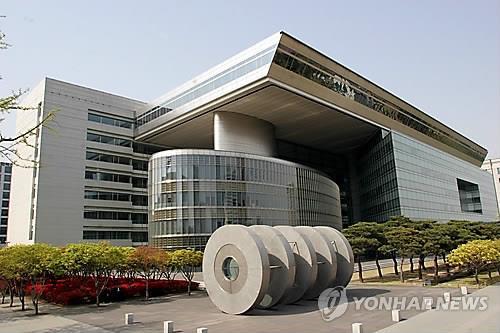[Newsmaker] KDB burdened by corporate debt restructuring
By Park Hyung-kiPublished : April 27, 2016 - 14:39
State-owned Korea Development Bank was founded in 1954 with a specific goal and role -- to back the government’s industrial policies by providing necessary capital to help companies innovate, grow and most importantly, create jobs.
But 62 years later, with a plethora of companies failing to meet their debt obligations and facing inevitable restructuring through asset sales and job cuts, the policy bank has now turned into a “fireman” who will have to put out the fire caused by corporate mismanagement, instead of being a Samaritan providing capital to create new industries and jobs.
But 62 years later, with a plethora of companies failing to meet their debt obligations and facing inevitable restructuring through asset sales and job cuts, the policy bank has now turned into a “fireman” who will have to put out the fire caused by corporate mismanagement, instead of being a Samaritan providing capital to create new industries and jobs.

Concerns are being raised as to whether KDB has enough resources to put out the fire before it further spreads to households and affects private consumption. The list of companies struggling to repay their debt to KDB and Export-Import Bank of Korea, another policy bank that supports companies’ exports, is enormous.
The shipping and shipbuilding sectors alone account for bad debts of over 20 trillion won ($17 billion) -- including loans taken by Daewoo Shipbuilding & Marine Engineering, STX Offshore & Shipbuilding, Hanjin Heavy Industries, Hyundai Merchant Marine and Hanjin Shipping -- that the two policy banks may have to write off. More companies in other sectors such as petrochemicals and steel are also expected to line up for government relief.
KDB lent 4 trillion won to Daewoo Shipbuilding, 1.2 trillion won to Hyundai Merchant Marine and 700 billion won to Hanjin Shipping.
Restructuring costs a lot of money and side effects for a country, as loss of jobs and businesses will lead to a shortfall in tax revenue and higher unemployment, which will further take a toll on the growth potential of Asia’s fourth largest economy. Already, shippers and shipbuilders have announced plans to cut jobs, with thousands expected to leave the workforce.
As the country’s main policy bank, KDB will also have to preemptively manage this repercussion during the restructuring process. By the looks of it, it will also need a lifeline as it will not be able to handle the trouble on its own.
With more than 8 trillion won exposed to bad loans and BIS capital adequacy ratio of below the 15-percent threshold, KDB, in short, simply does not have enough capacity to turn this negative situation around. It is even worse for Korea Eximbank, whose BIS ratio stands at around 10 percent.
The Finance Ministry and the Bank of Korea, therefore, have been called on for help. Options that are being considered include a monetary package with National Assembly approval or handing over government-owned securities of state-run enterprises to KDB to boost the bank’s capital base.
Yim Jong-yong, chairman of the Financial Services Commission, said investments in KDB bonds by the central bank is not an option.
“It is not liquidity (KDB needs), but capital to share restructuring costs,” Yim told reporters.
He added that this is entirely a separate issue from allowing the central bank to invest in KDB bonds to inject liquidity into the market as part of quantitative easing.
Either way, taxpayers will ultimately have to pay the price with the government indicating an option for extra spending through bond issues as a means to finance restructuring costs through its policy banks.
By Park Hyong-ki (hkp@heraldcorp.com)












![[Today’s K-pop] BTS pop-up event to come to Seoul](http://res.heraldm.com/phpwas/restmb_idxmake.php?idx=644&simg=/content/image/2024/04/17/20240417050734_0.jpg&u=)




![[KH Explains] Hyundai's full hybrid edge to pay off amid slow transition to pure EVs](http://res.heraldm.com/phpwas/restmb_idxmake.php?idx=652&simg=/content/image/2024/04/18/20240418050645_0.jpg&u=20240419100350)

![[Today’s K-pop] Zico drops snippet of collaboration with Jennie](http://res.heraldm.com/phpwas/restmb_idxmake.php?idx=642&simg=/content/image/2024/04/18/20240418050702_0.jpg&u=)